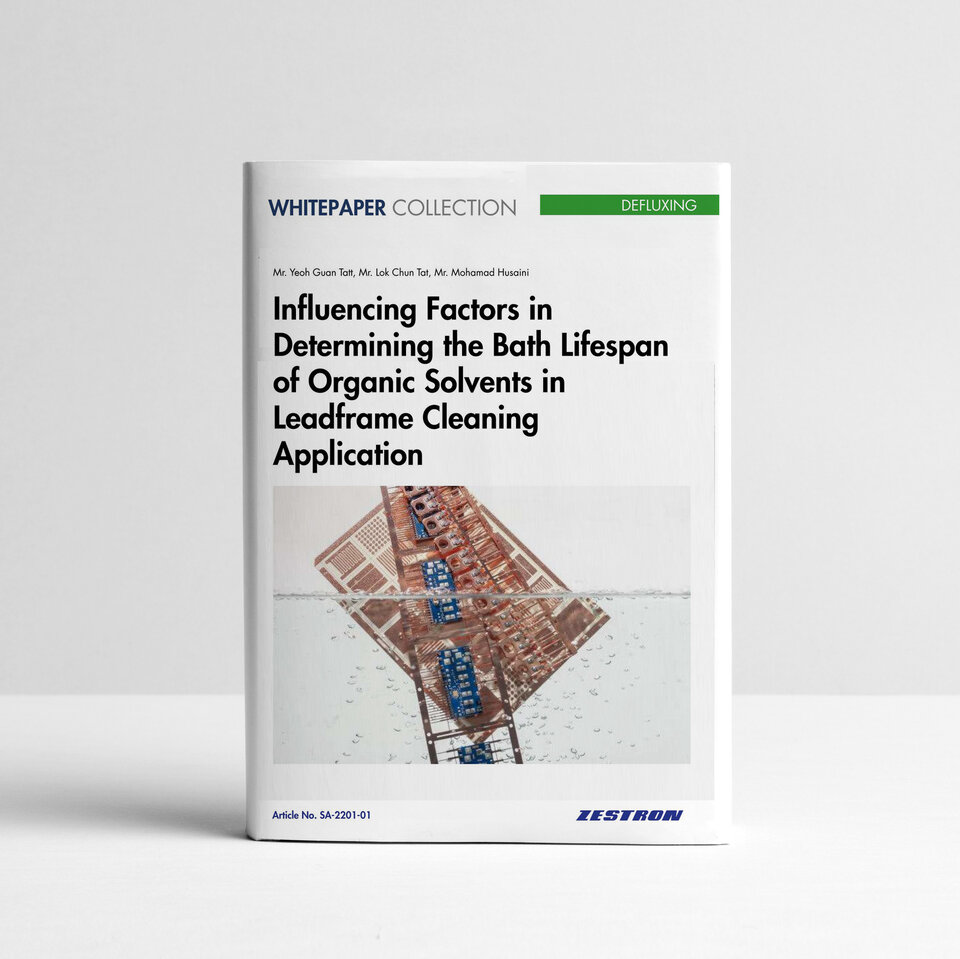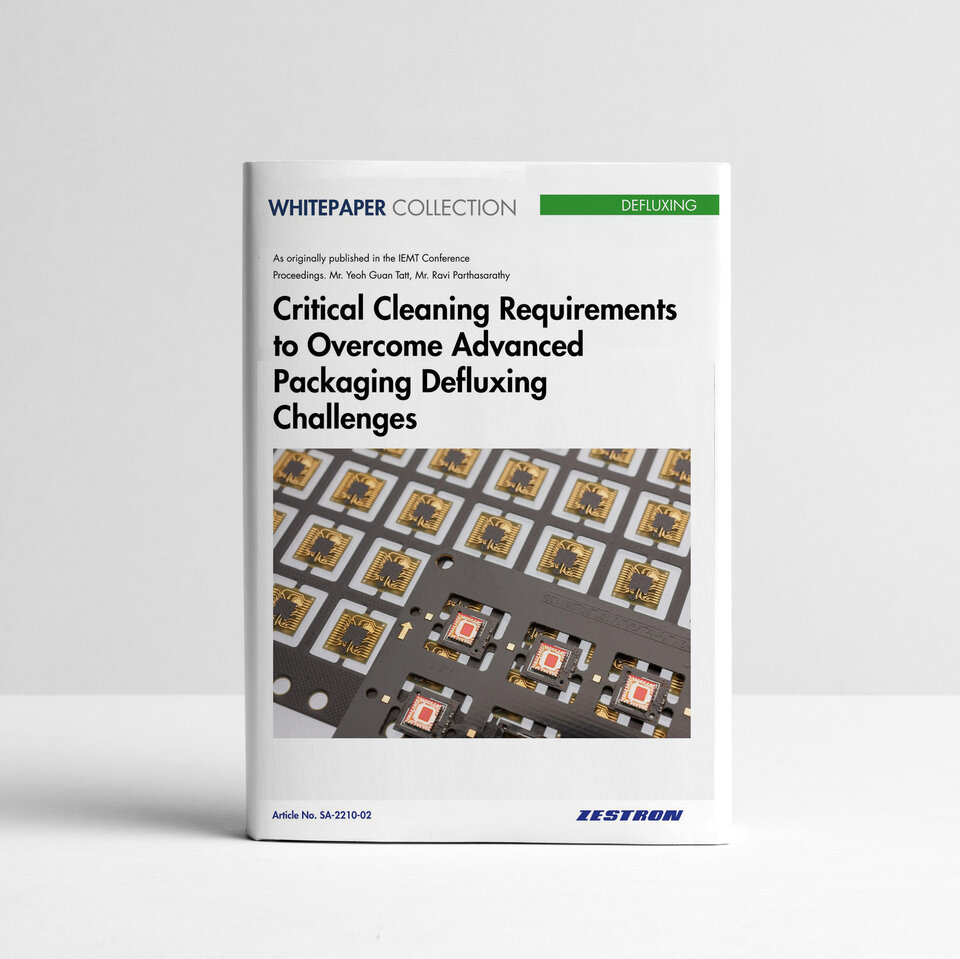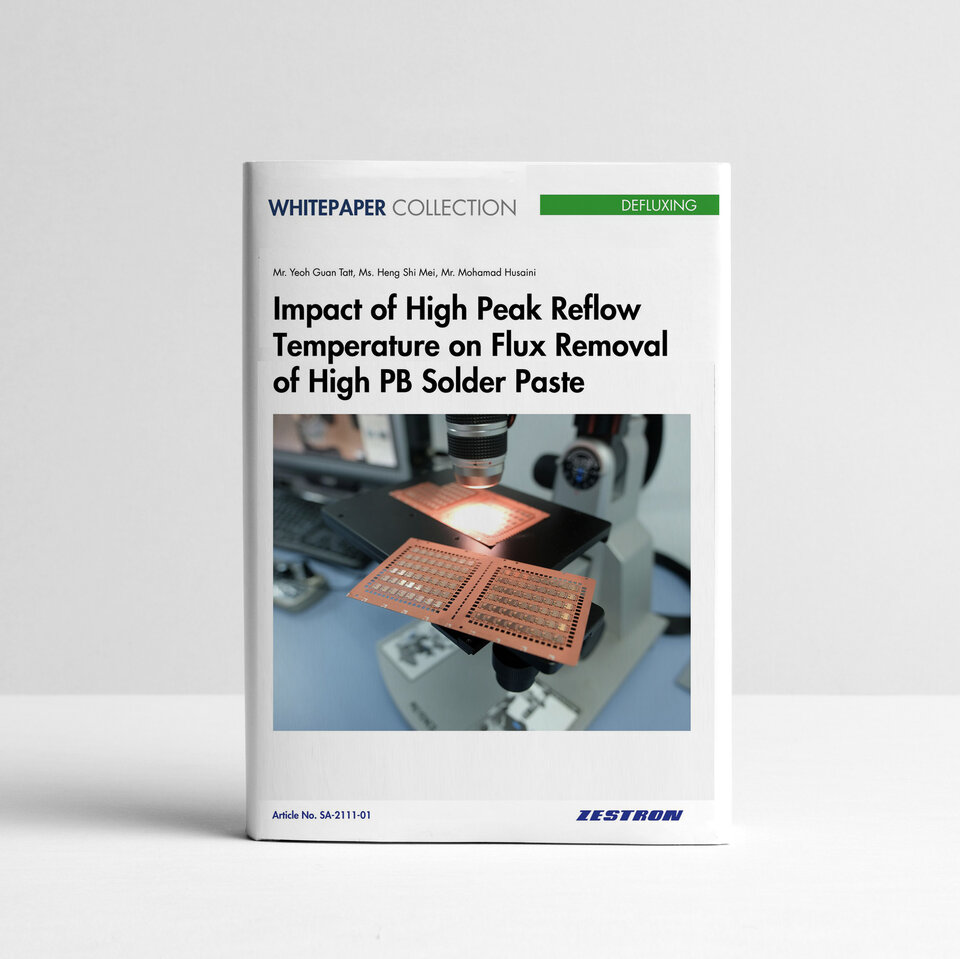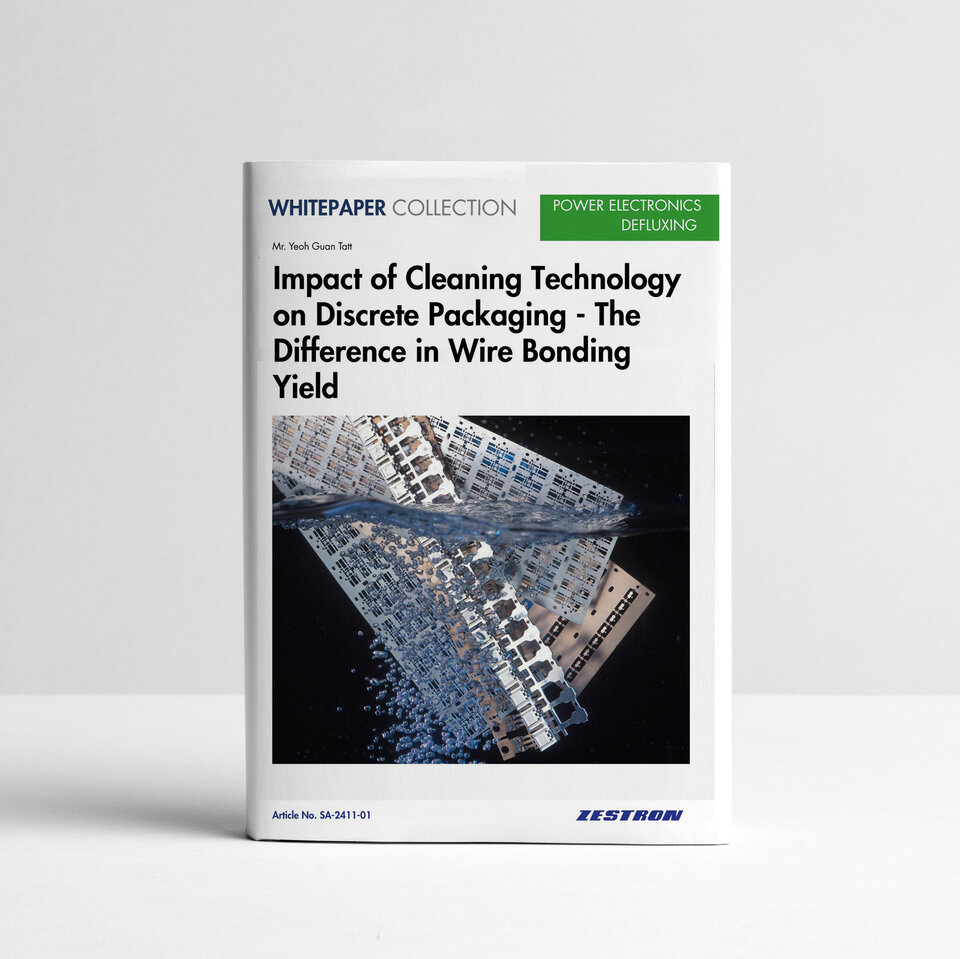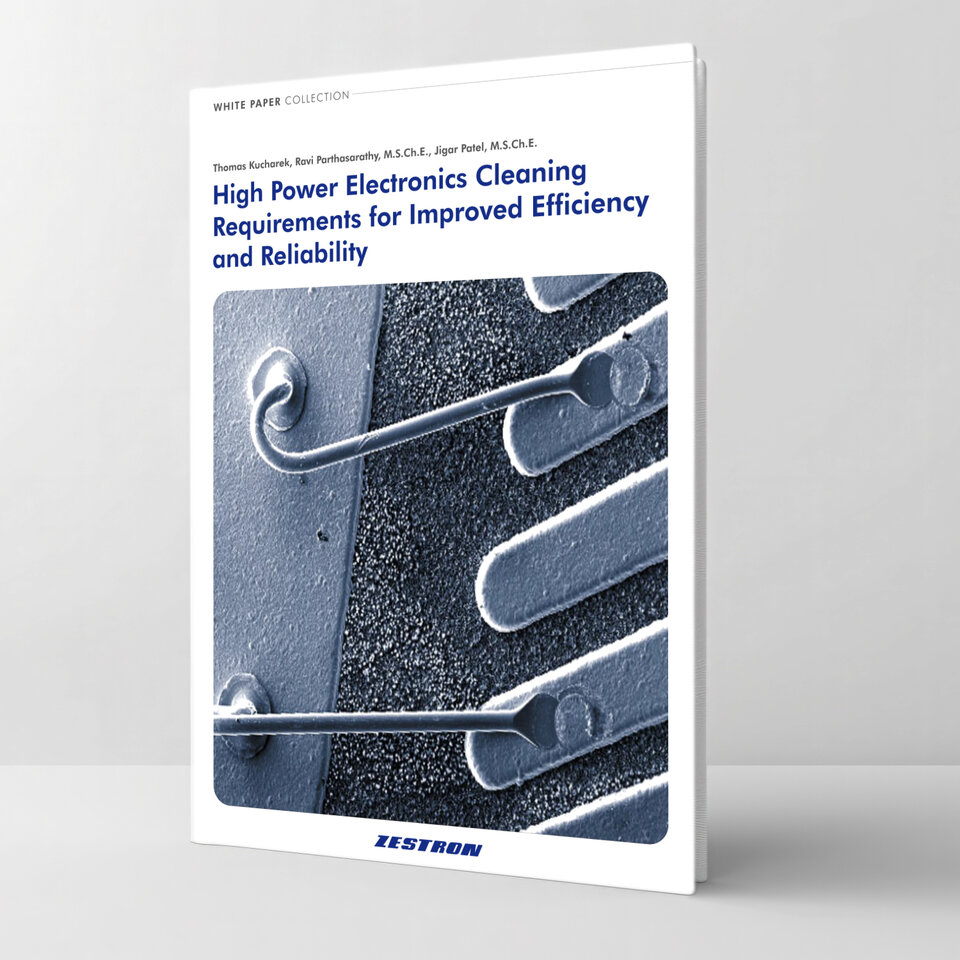PCB Surface Finishes & the Cleaning Process - A Compatibility Study
ZESTRON AMERICA'S WHITEPAPER-COLLECTION
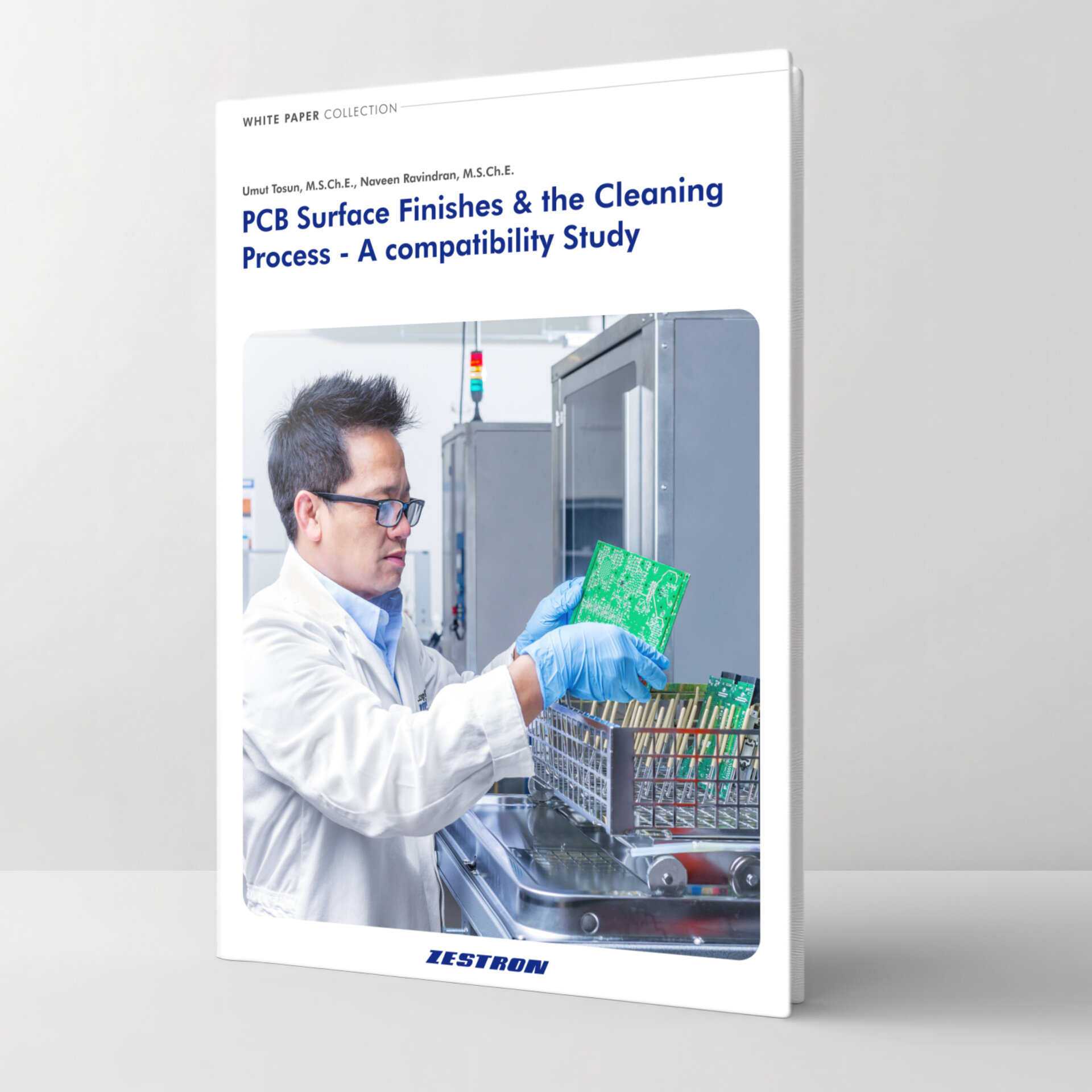
Whitepaper-collection PCB Surface Finishes & the Cleaning Process - A Compatibility Study
» FREE «
[ZESTRON Americas - Mr. Umut Tosun, M.S.Ch.E., Naveen Ravindran, M.S.Ch.E.]
ABSTRACT:
All PCBs that are manufactured require a surface finish to protect exposed copper on the surface which if left unprotected, can oxidize, rendering the board unusable. To address this issue, it is common to surface treat the PCB prior to assembly and reflow. The surface finish not only prevents oxidation of the underlying copper, but guarantees a solderable surface. A cost effective and widely used approach to PCB surface finish is HASL (Hot Air Solder Leveling). However, as circuit complexity and component density have increased, HASL has reached its limitations, necessitating the need for thinner coatings. Thus, coatings such as Immersion Tin (ImSn), Immersion Silver (ImAg), Organic Solderability Preservatives (OSP), and Electroless Nickel Immersion Gold (ENIG) are becoming more widely used.
As most PCBs designed for use in high reliability applications are cleaned or ‘washed’ in aqueous-based cleaning systems, the effect of the cleaning solution on the surface finish is of great concern. Depending on the cleaning process employed, it is possible for stains to appear on the plating or in the worst case, for the plating to be completely stripped from the PCB rendering the applied surface finish useless.
This study was designed to investigate the effect of reflow and various cleaning agent types on ImSn, ImAg and ENIG surface finishes. Unpopulated ZESTRON® test vehicles, with the appropriate surface finish, were used for all trials. In a previous study by the authors, the OSP surface finish was analyzed for integrity within an aqueous-based cleaning.
For more information, request for this free whitepaper.
Delivery Form: PDF
